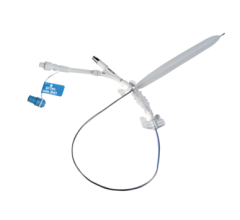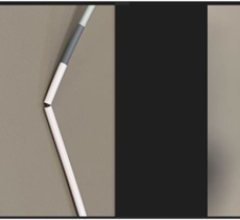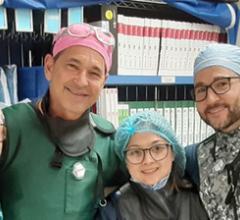Largest-ever study re-evaluates this important question with today’s technology
March 31, 2008 - Percutaneous coronary intervention (PCI)—which uses a combination of catheter-mounted balloons and stents to open a completely blocked coronary artery and restore blood flow to the heart—is the best treatment for heart attack when performed rapidly. However, few hospitals can meet the 90-minute treatment goal unless they have a cardiac catheterization laboratory on site.
A new study is expected to shed light on whether patients who are first treated with clot-busting drugs should be routinely transferred to a medical center with a cardiac catheterization laboratory for follow- up PCI, or be observed for an hour or more and sent for PCI only if clot-busting drugs fail, the standard approach today.
The study—the Trial of Routine Angioplasty and Stenting After Fibrinolysis to Enhance Reperfusion in Acute Myocardial Infarction (TRANSFER-AMI)—is being reported today in a Late-Breaking Clinical Trials session at the SCAI Annual Scientific Sessions in Partnership with ACC i2 Summit (SCAI-ACCi2) in Chicago. SCAI-ACCi2 is a scientific meeting for practicing cardiovascular interventionalists sponsored by the Society for Cardiovascular Angiography and Interventions (SCAI) in partnership with the American College of Cardiology (ACC).
Early studies in the 1980s showed that performing PCI after treating patients with clot-busting drugs— also known as thrombolytic or fibrinolytic agents—offered no benefit and might even be harmful. Since then, however, thrombolytic medications have changed, stents are routinely used, and interventional cardiologists have refined protocols for delivering newer anti-clotting medications.
“There’s good reason to believe that performing PCI after thrombolytic therapy is safer and more effective now than in previous studies,” said Warren J. Cantor, MD, medical director of the interventional and invasive program at Southlake Regional Health Centre, Newmarket, Ontario, Canada. “It’s an important question, because more than 75 percent of hospitals in North America don’t have PCI facilities.”
TRANSFER-AMI is the largest-ever randomized trial to investigate this question. For the study, Dr. Cantor and his colleagues enrolled 1,060 high-risk patients with either a large or complicated heart attack, also known as ST-segment-elevation myocardial infarction (STEMI). All patients initially sought treatment at a hospital without PCI capability and were treated with tenecteplase, a clot-busting drug. Patients were then randomly assigned to urgent transfer for PCI within six hours, or to standard therapy, consisting of observation for 60 to 90 minutes, with transfer for PCI only in the case of continuing chest pain or other evidence of treatment failure.
The study will evaluate 30-day combined rates of death, repeat heart attack, recurring ischemia, heart failure and shock in the two groups of patients.
“Many hospitals have difficulty getting patients to the cath lab within the recommended 90 minutes, but six hours is a much more realistic goal,” Dr. Cantor said. “If routine PCI is clearly superior to standard therapy in the TRANSFER-AMI trial, then all institutions that use thrombolysis for treating STEMI will need to develop strategies to get those patients to a cardiac catheterization laboratory within six hours.”
Dr. Cantor will present the results of the "Trial of Routine Angioplasty and Stenting After Fibrinolysis to Enhance Reperfusion in Acute Myocardial Infarction” (TRANSFER-AMI) study on Sunday, March 30 at 8:45 a.m. CDT in the Grand Ballroom, S100.
For more information: www.acc08.org


 June 13, 2024
June 13, 2024 








